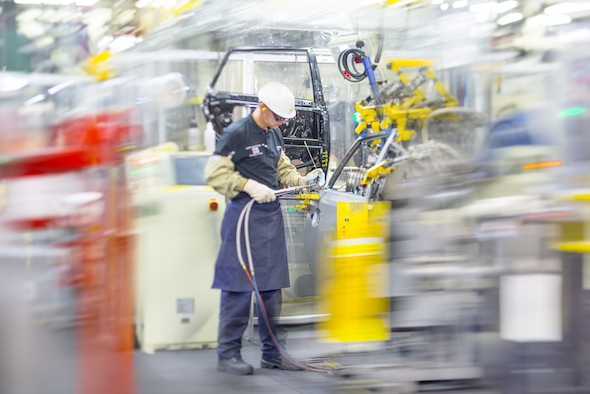
Discover the 12 other pillars of the Toyota Production System:
Konnyaku Stone
Poka-Yoke
Hansei
Andon
Jidoka
Just-In-Time
Heijunka
Kaizen
Genchi Genbutsu
Nemawashi
Kanban
Muda, Muri, Mura
Genba
Working in an open-plan environment is what Genba is all about. Here is our explanation…
Genba or Gemba (English: The real place, the place where the actual work is done): Now adapted in management terminology to mean the ‘workplace’ or the place where value is added. In manufacturing, it usually refers to the shop floor.
Within Toyota, the philosophy of Genba means that all actions and processes are as transparent as possible
This visibility allows Toyota team members to conduct regular Genba Walks in order to identify areas where potential improvements might be made, and to better understand the workload of their colleagues.
Walks around the frontline environment of the Genba also help to reinforce Kaizen… The philosophy of continuous improvement.
The Genba is the most important location in a Toyota factory – a place where time, productivity and space are crucial and not to be wasted. Read about Muda, Mura and Muri – different kinds of waste – here.
See our full Toyota Production System glossary.





The word is GEMBA. Please correct this as it undermines the perceived Toyota knowledge base. I’ve already raised this once without response (something completely unacceptable when I was a TMUK Quality Engineer!)
Hi Mark,
Thanks for the comment. Either Genba or Gemba is acceptable as the word does not translate directly into English.
We’ve updated the article to account for both spellings.
Kind regards,
Will
I first heard this as genba, in the context of the ‘san gen shugi’ (three real philosophy):
– real place (in this context, shop floor rather than the virtual reality of a PC or office etc.)
– real thing (again, the actual thing, rather than an image or theoretical representation)
– realistic action (as in making plans practical rather than idealistic)
I then heard ‘gemba’, ‘gembutsu’, ‘kamban’ etc. and queried this. I was told that the difference in Japan is subtle and matters little. So I asked an expert in oriental languages, who replied:
“The problem is how to represent the Japanese “syllabic nasal” in Latin-based alphabets.
In Japanese orthography, the syllabic nasal (what looks to the reader of English like a syllable-final nasal consonant) is always written the same way regardless of whether it’s pronounced -m, as it is in front of p, b or m) or -n, as it is everywhere else. (Compare a similar mechanism in English, from Latin, in, say, the negative prefix “-in”: inorganic and invariable, but improper and impartial).
Any scheme for spelling Japanese words in the Latin alphabet therefore has to choose, for this sound, between phonological accuracy (n) and phonetic accuracy (m). The most commonly cited non-academic romanisation standard, the modified Hepburn system used in the third and later editions of Kenkyusha’s New Japanese-English Dictionary (http://en.wikipedia.org/wiki/Hepburn_romanization), uses n with a macron over it, or “n-bar.” This seems too fussy for lots of nonspecialists, though, and the older convention of using m before -p, -b and -m remains widespread.
Conclusion: “gemba” is old-fashioned and anglocentric; “genba” is more modern and nipponocentric. Who said there were no choices in life?
The same applies to kanban, of course: it can be written either “kanban” or “kamban,” although the former spelling seems enshrined by widespread practice. The last consonant is always n, never m.
I hope this clears it up!
Hell yeah Steve, awesome way to sum up a question I had for a while!
Do Toyato actually use Gimba or is it just to make them look ethicarl?
Hi Steven, thanks for your comment.
All of our factories use all elements of the Toyota Production System. Our UK manufacturing plant in Burnaston used to take visitors, where you could see this in action, although this is sadly no longer offered at the moment.
Thanks,
Toyota UK